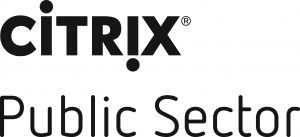This article is an excerpt from GovLoop’s recent guide, “7 State & Local Tech Trends to Watch.” Download the full guide here.
Cloud isn’t one-size-fits-all for governments. State and local agencies, for example, often have distinct budgets, needs and workforces. Solutions that work for some organizations may fail for others.
Thankfully, cloud’s elasticity is helping agencies at all levels achieve victories regardless of their goals. It’s also enabling better public services for government IT staffs nationwide and improving overall operations and costs.
Though the benefits are often similar, not every cloud journey unfolds the same way. Some agencies are fully embracing cloud, while others are deploying it alongside on-premise IT technology. Cloud’s versatility is letting organizations modernize at their own pace.
In a recent interview with GovLoop, David Smith, National Director, State and Local Government Sales at Citrix Public Sector, discussed how agencies are setting the right cloud agenda for them. Citrix is a leading cloud services provider whose government clients are tailoring the technology in multiple ways. Many agencies are relying on cloud more heavily, while others are deploying a hybrid model including on-premise infrastructure.
“Cloud allows agencies to focus on the services that they’re delivering rather than the technologies that they’re using,” Smith said. “Challenges come when deciding what cloud to use, what applications will or won’t live on it, the security of data and where it will be stored.”
A hybrid approach lets agencies have their cake and eat it too. Agencies that lack the funding and labor to fully adopt cloud can save energy, time and money by mixing it with existing infrastructures. Organizations with aging IT wean themselves off it onto the cloud, creating a smoother transition.
“Hybrid cloud will most likely be the way that governments deliver services for the foreseeable future,” Smith said. “It’s attractive because the way that the services are being delivered is in the location with the most efficient delivery.”
This means some agencies’ applications run better on-premise due to the way that they’re built or the data they contain. Others fit better on the cloud, where they function more cheaply and efficiently.
This flexibility means that cloud keeps organizations from getting tied to older technologies that advance slowly. Agencies are less constrained by hardware, software or rigid data center requirements as they have more alternatives for hosting and delivering their services.
Many state and local governments are struggling, however, with whether their data centers are safer than the cloud. Cybersecurity is a major concern for governments due to the sensitive citizen data they handle.
“Government organizations have more personal information about us than any other organization,” Smith said. “These organizations are always under attack and need to be able to adapt to a changing security landscape.”
Cloud services like those Citrix provides comply with the cybersecurity standards relevant to each level of government while protecting constituent data. They also strengthen cybersecurity by deploying behavior analytics to mitigate and respond to threats faster.
Behavior analytics is useful for establishing a pattern of appropriate conduct for how end users are accessing a network’s various applications and data. When combined with artificial intelligence (AI), analytics can have the platform automatically react and apply policy when user behavior strays from expected norms. Security analysts can choose to what extent their policy restricts or prevents access, allowing faster and more appropriate responses to potential security events.
Cloud’s fluidity and scalability means that agencies can add and subtract applications based on their needs. This lets organizations refine the scope of their tools based on the demands that they’re facing. Government IT employees have ultimate control over how they deliver services, a situation giving them more choices.
Solutions like those Citrix offers present workforces with a single, secure platform for managing their cloud capabilities. This shrinks IT infrastructure costs while protecting data and sculpting cloud services and solutions to meet organizational needs.
“Our biggest differentiator from other cloud platforms is we can provide a common workspace experience for the end user regardless of where their applications and data live,” Smith said. “This experience can extend across all types of devices and networks while providing a common management platform to maintain policies across both cloud and on-premise applications.”






Nice article. Really enjoyed seeing the behavior analytics part. Shows that all of these solutions are starting to play off each other, which is really exciting.